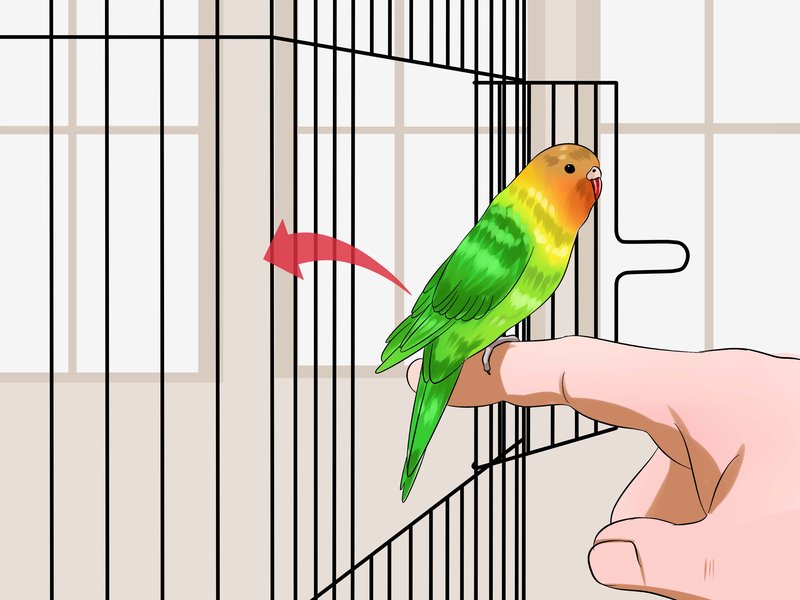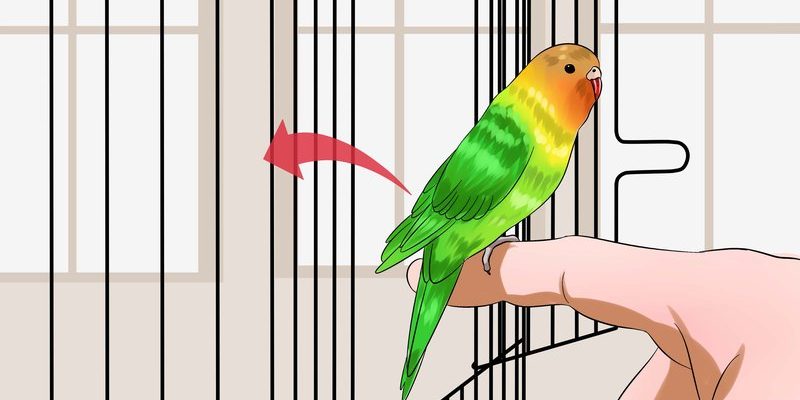
Many people wonder, *Can finches be tamed?* The short answer is yes, but it takes some time and effort. Finches are naturally skittish creatures, and they don’t always seek human interaction. However, with the right approach, you can encourage them to feel comfortable around you. Let’s dive into some effective tips for gentle handling and taming your finch while ensuring their well-being remains a top priority.
Understanding Finch Behavior
Before you can think about taming your finch, it’s crucial to understand their natural behavior. Finches are social birds that thrive in flocks. In the wild, they rely on their companions for safety, and this instinct can lead to defensive behaviors when they perceive danger. If they see you as a potential threat, they might react by hiding or flying away.
You might be wondering why some finches seem more skittish than others. Just like people, individual birds have unique personalities. Some are naturally bolder, while others might be more reserved. Pay attention to your finch’s behavior. For instance, if they puff up their feathers or dart away when you approach, they are likely feeling anxious. On the other hand, if they perch quietly and watch you, that’s a good sign they’re curious and may be open to interaction.
To create a trusting environment, avoid sudden movements and loud noises. Imagine a deer in a meadow—it won’t stick around if you startle it with a loud noise. The same goes for your finch. Move slowly and speak softly, gradually allowing them to get used to your presence.
Creating a Comfortable Environment
A comfortable space is essential for taming your finch. Start by ensuring their cage is appropriately sized and enriched with toys, perches, and places to hide. A stimulating environment will help reduce their stress levels and encourage them to explore their surroundings.
Try placing the cage in a quiet area of your home where the finch can see and hear you without feeling overwhelmed. This could be in a living room corner or even near a window where they can enjoy natural light. Just remember to keep drafty windows and direct sunlight in mind, as these can be harmful to your finch.
You might also consider covering a portion of the cage with a light cloth. This provides a cozy atmosphere for your finch, making them feel more secure. Just like how we appreciate a cozy blanket when we’re feeling uneasy, your finch will benefit from a safe space where they can retreat.
Building Trust Through Interaction
Now that you’ve set up a comfortable environment, it’s time to start building trust with your finch. Patience is key here. Begin by simply sitting near their cage and talking softly to them every day. This gentle presence will help them associate your voice with a sense of safety.
Once your finch seems comfortable with your presence, you can try offering them a treat. Finches love small bits of fruits and vegetables, like pieces of apple or carrot. Use a small container or your hand to offer the treat, but don’t force them to come to you. The goal is to let them approach you when they feel ready.
If your finch takes a treat from your hand, that’s a huge step forward! It shows they’re beginning to trust you. You might also want to spend a little time each day near their cage, reading aloud or humming a tune. These calming activities can strengthen the bond between you and your feathered friend.
Handling Techniques for Gentle Interaction
Once your finch is comfortable taking treats from your hand, you can gradually introduce gentle handling. Start by placing your hand near the cage without reaching in. This allows your finch to explore their new surroundings at their own pace. If they’re curious, they may hop onto your hand without you needing to coax them.
When handling your finch, it’s essential to keep your movements slow and relaxed. Avoid grabbing or pinching, just like how you wouldn’t want someone to grab your arm unexpectedly. Instead, let your finch step onto your hand or finger willingly. Gently support their body, holding them securely but without squeezing.
If your finch seems nervous, don’t push it. Back off and try again later. Building trust takes time, and every finch is different. Celebrate small victories—like a successful hand-off or your finch chirping happily while perched on your finger. These moments can make all the effort worthwhile!
Recognizing Signs of Stress
As you work on taming your finch, it’s important to recognize signs of stress. These signs can vary from bird to bird, but there are a few common indicators to look out for. If your finch is puffing up its feathers, making loud calls, or frantically fluttering about, it may be feeling threatened.
Another sign of stress is if your finch is hiding or staying at the bottom of the cage. This behavior suggests they don’t feel safe in their environment. If you notice any of these signs, take a step back. Allow your finch some time to calm down before trying to interact again.
You can also consult an avian vet if you’re unsure about your finch’s behavior. They can provide valuable insights into whether your finch is experiencing stress due to external factors or if it’s simply part of their personality.
Maintaining Your Finches’ Well-Being
Caring for your finch goes beyond just gentle handling. It’s essential to maintain their overall well-being to support a healthy relationship. Provide a balanced diet filled with seeds, pellets, and occasional fresh fruits and veggies. A nutritious diet contributes to their physical health, which in turn affects their temperament.
Regular cage cleaning is also vital. It helps prevent illness and keeps your finch feeling fresh and clean in its habitat. Ensure they have fresh water daily and keep an eye on their droppings, as changes can indicate health problems.
Finally, encourage social interaction among other finches, too, if possible. If your finch has a buddy, they can help reduce stress and promote natural behavior. After all, they’re social creatures!
Final Thoughts on Taming Finches
So, can finches be tamed? Absolutely, but it requires patience, understanding, and consistent effort. You’re not just training a bird; you’re developing a bond built on trust. By creating a comfortable environment, practicing gentle handling, and maintaining their well-being, you’ll be well on your way to establishing a rewarding relationship with your finch.
Remember, every finch is unique, and what works for one may not work for another. It’s essential to observe their behavior and adapt your approach according to their needs. As you embark on this journey of taming, cherish the little moments of connection you share. They can turn a simple act of feeding into a beautiful experience, one chirp at a time.

